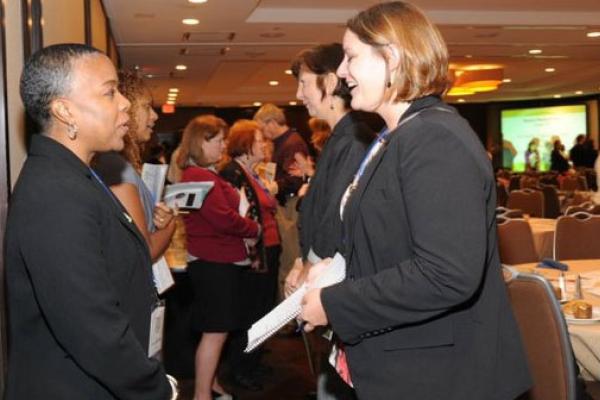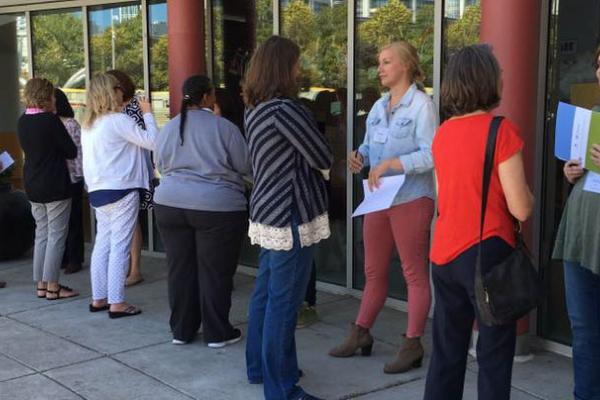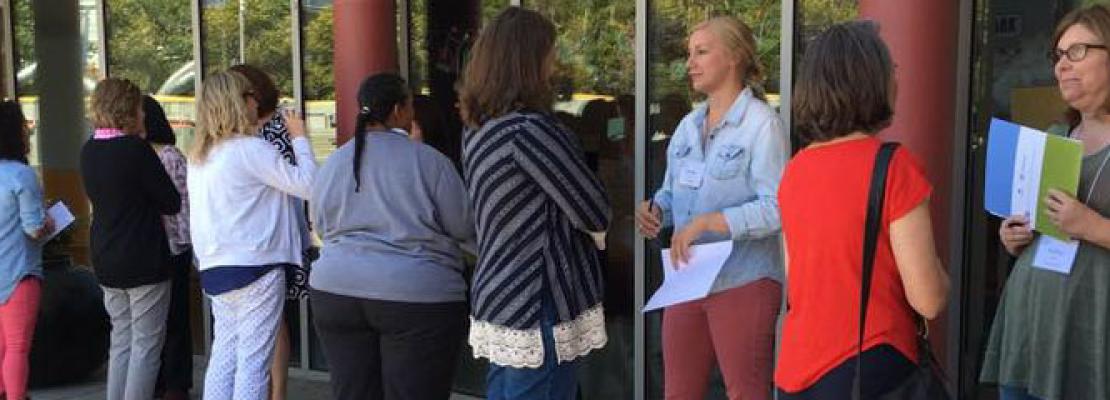Ever since joining the National Girls Collaborative, I’ve been fascinated by the core activity of collaboration networking. It’s typically the most highly rated aspect of our collaboration forums…to the degree that we’ve joked about skipping all the rest of the content and just collaboration networking all day!
Though we sometimes compare it to speed dating, there’s a critical difference. In speed dating, you’re quickly sharing and comparing mutual interests, experiences, and perspectives on life. But rarely in speed dating do you articulate why you’re really there—what you NEED from a relationship with another person.
In collaboration networking, it’s the opposite. Of course, we share our names, titles, and general job descriptions, but the activity is really designed to coach people on how to articulate what they NEED and how to reflect on what they can OFFER, so collaboration can take form. When leading a collaboration networking session, I always offer up a personal example: I work at a university, so I have access to classrooms and computers. Because they are all around me, these resources almost become invisible to me! However, to a Girl Scout troop or afterschool program, a classroom full of computers may be exactly the resource they need to complete a project.

Since the COVID-19 crisis, I have seen many instances of need fulfillment pop up, often organically. People are improvising and quickly developing systems to support one another. In the early days of COVID, two moms in my community started a Facebook group to help those who couldn’t find scarce supplies like diapers, children’s Tylenol, or firewood. Within days the online community had ballooned to over 1,500 people willing to offer support and resources. The people on this site are really effective at articulating their needs, which are often tangible, physical, and immediate:
My husband lost his job, and we need help getting our daughter a present for her birthday.
My roommate has a CPAP machine, and I need vinegar to clean it.
We serve the homeless and need donations of tents, sleeping bags, and gloves.
These needs are easy to understand and easy to help with. People WANT to help!
But sometimes, especially when we are doing systems or capacity-building work, we have a harder time zeroing in on exactly what we need to accomplish our goals, or we are reluctant to ask someone to help. Additionally, we often don’t recognize the abundance of resources each of us has to offer.

When life returns to normal, I hope we will remember some of the lessons we’ve learned in these months since COVID-19 hit our world: People are not typically very good at defining or asking for what they need. This takes thought and practice, but it’s an exercise worth doing!
We all have resources we can—and want—to share with others. Sometimes we don’t even realize what resources we have until somebody articulates them as a need. People are generous. People are kind. People are collaborative. Let’s keep the spirit going!

